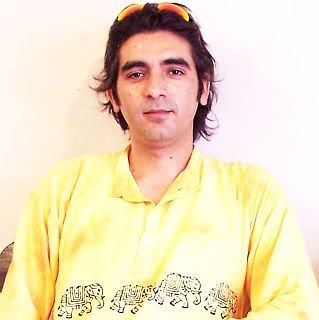माण्डुक्योपनिषद (Mandukya Upanishad) - Verse 3
जागरितस्थानो बहिष्प्रज्ञः सप्तान्ग एकोनविंशतिमुखः स्थूल भुग्वैश्वानरः प्रथमः पादः ॥ 3 ॥
jaagaritasthaano bahishhpragyah saptaanga ekonavinshatimukhah sthool bhugvaishvaanarah prathamah paadah
Translation:
jaagarit (जागरित) - Awake/Conscious
sthaano (स्थानो) - Place
bahis (बहिस्) - Outside/Outward/Outer/Excluded/External
pragya (प्रज्ञ) - Knower/Acquainted/Intelligent
sapt (सप्त) - Seven
anga (अन्ग) - Limb/Part
ekonavinsha (एकोनविंश) - ekon (एकोन) + vinsha (विंश) - Lacking one + Twenty = Nineteen
mukhah (मुखः) - Mouth/Face/Aspect
sthoola (स्थूल) - Big/Large/Bulky/Massive
bhuk (भुक्) - Enjoying/Entertaining - derived from bhukti (भुक्ति) - Enjoyment/Fruition
vaishva (वैश्वा) - Earthly/Worldly - derived from vishvam (विश्वम्) - Universe
narah (नरः) - Man/Person (People)
prathamah (प्रथमः) - First
paadah (पादः) - Foot/Step/Aspect
Composite words:
jaagaritasthaano (जागरितस्थानो) - Composed by two words: jaagarit + sthaano (जागरित + स्थानो); means, Placed at conscious/Placed as conscious.
bahishhpragyah (बहिष्प्रज्ञः) - Composed by two words: bahis + pragya (बहिस् + प्रज्ञ); means, Outward knower/Acquainted to outer.
saptaanga (सप्तान्ग) - Composed by two words: sapt + anga (सप्त + अन्ग); means, Seven limbs/Seven parts.
ekonavinshatimukhah (एकोनविंशतिमुखः) - Composed by three words: ekon + vinsha + mukhah (एकोन + विंश + मुखः); means, Nineteen faced/Having nineteen mouths.
sthoola bhuk (स्थूल भुक्) - Two words meant to be used together; means, Enjoying big things/Entertaining (experiencing) larger (sensible) things.
vaishvaanarah (वैश्वानरः) - Composed by two words: vaishva + narah (वैश्वा + नरः); means, Worldly person/"Common man".
Fragmented verse:
जागरित स्थानो बहिस प्रज्ञः सप्त अन्ग एकोनविंशति मुखः स्थूल भुक् वैश्वानरः प्रथमः पादः
jaagarita sthaano bahis pragyah sapta anga ekonavinshati mukhah sthool bhuk vaishvaanarah prathamah paadah
Simple meaning:
Placed as conscious, outward knower, with seven limbs and nineteen mouth; entertaining large things, worldly person (Vaishvaanarah), is first aspect.
Reference Commentary:
http://acharya.iitm.ac.in/mirrors/vv/scripture/upanishads/mandukya.html
The first aspect is Vaisvanara, or the materialistic state of wakefulness with external consciousness, experiencing gross objects with the aid of seven limbs and nineteen mouths (faculties).
Comments:
All existence, whether considered on the macro scale of the Universe, or the micro scale of the individual, is a manifestation of the Brahman or the Atman. Existence is described using the symbolism of human body, in terms of those organs and faculties of it that provide us with all that we experience:
(a) Seven limbs: The head, eyes, breath, the trunk, lower organ, and the two feet, in the case of an individual; and correspondingly, the heaven, the sun, the air, the sky, water and the earth in the case of the Universe, which together make for physical existence.
(b) Nineteen faculties of the body: The five sensory organs, the five motor organs, the five pranas (प्राण) or vital energies, and the four aspects of the mind, that make for our consciousness of existence.

No comments:
Post a Comment